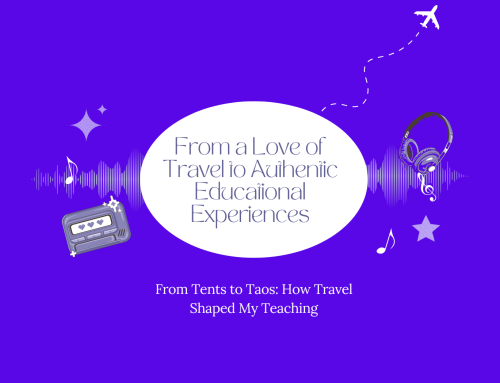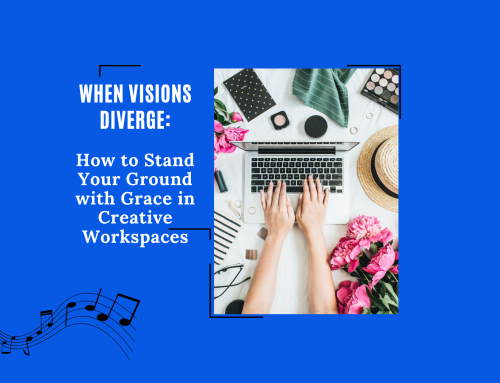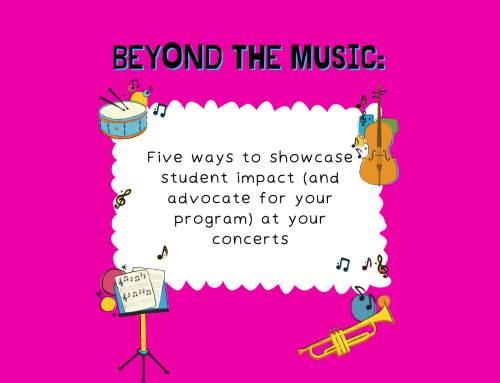Table of Contents
Brief Context
As a music educator at Pepin Academies in Hillsborough County, I’ve seen firsthand how music can unlock potential in students who don’t fit the typical mold—those we now call neurodivergent, with minds wired for brilliance in ways that defy convention. I also served as a music instructor and youth music pastor in the E.D.G.E. program, a church-partnered initiative for exceptional student education (ESE), where I blended soul cultivation with musicianship. These experiences taught me that neurodivergent students—those with autism, ADHD, dyslexia, or other learning differences—aren’t just capable of learning music. They can lead, innovate, and turn beats into businesses, if we give them the right tools.
Traditional music education, with its scales and symphonies, is a beautiful foundation, but it often misses the mark for these students. Sheet music can feel like a foreign language to a learner with dislexia, and sitting still for a choir rehearsal can be torture for someone with ADHD. Yet, over years of teaching, I found that when I leaned into their strengths—rhythm, creativity, resilience—something magical happened. They didn’t just participate; they thrived. Here’s how I did it, backed by research and a bit of soul-driven philosophy, plus a framework I call POSSIBLE to guide us forward.
From Classroom to Calling: What Worked for Me
At Pepin, I taught students in grades 3–12, many of whom faced learning or behavioral challenges. I ditched the one-size-fits-all approach and got creative. We used iPads for music production—think GarageBand jams where kids with ADHD could channel their energy into crafting beats. Collaborative ensembles became our playground; students with autism found structure in group improvisation, taking turns leading cyphers. Songwriting, especially hip-hop, was gold. A student with dyslexia who struggled with reading lit up when crafting rhymes about his life, turning words into power.
Parental involvement was key. I invited families to workshops, showing them how to support their kids’ musical passions at home. One mom learned to record her son’s raps on her phone—suddenly, she was his biggest cheerleader. I also had students research their favorite artists—Kendrick Lamar, Chance the Rapper, whoever spoke to them. They’d dig into these musicians’ struggles with adversity, from poverty to mental health, and reflect on their own resilience. It wasn’t just music history; it was life lessons in grit and identity.
In the E.D.G.E. program, I added a pastoral twist. Beyond teaching chords, I nurtured their spirits—helping them see music as a way to connect with something bigger, whether faith, community, or self. We’d produce tracks together, and I’d ask, “Who’s this for? How can it lift someone up?” That’s when leadership emerged. A shy teen on the autism spectrum once took the mic to direct a session, and a restless student with ADHD pitched a concert idea to raise funds for the church. These weren’t just activities—they were seeds of entrepreneurial thinking.
Research Backs It Up
Studies confirm what I saw. Travis (2013) found that hip-hop and beat-making reduced stress by 20% in neurodivergent youth, giving them an emotional outlet. Kim and Bryan (2021) showed how music production programs sparked entrepreneurial skills, with kids launching SoundCloud careers. McFerran et al. (2018) noted a 35% confidence boost in autistic teens through songwriting—proof that lyrics can build identity. Love (2015) debunked the “urban-only” myth, showing hip-hop works in suburban ESE settings like Pepin too. And Plato’s old idea—that music shapes the soul—echoes here: it’s not just skill-building, it’s soul-cultivating.
The POSSIBLE Framework: A Roadmap for Growth
From these experiences, I’ve crafted the POSSIBLE Framework to cultivate leadership and entrepreneurial thinking in neurodivergent students. Each letter is a step we can take:
- Purpose: Start with “why.” I’d ask students, “What’s your music for?” Purpose drives them—whether it’s self-expression or community impact.
- Openness: Embrace flexibility. Freestyle circles let autistic students shine without rigid rules, fostering creativity (Levy & Adjapong, 2021).
- Skills: Teach practical tools—beat-making, lyric-writing, even marketing. Kim and Bryan (2021) highlight how these skills turn hobbies into hustles.
- Support: Involve parents and peers. My workshops built a team around each student, amplifying their growth.
- Inquiry: Encourage research. Studying artists’ lives taught resilience and problem-solving, mirroring Haupt’s (2012) findings in South Africa.
- Belief: Build confidence. Songwriting gave my students a voice to say, “I’m enough” (Viega, 2018).
- Leadership: Hand them the reins. Directing ensembles or pitching projects turned passive learners into leaders.
- Empowerment: Let them own it. A student selling beats or performing for a cause? That’s the endgame.
This isn’t linear—it’s a cycle. Purpose fuels openness, skills need support, and belief breeds leadership. It’s dynamic, like hip-hop itself.
Implications for Music Educators and Policymakers
So, what does this mean for us? Educators, try this: swap some theory for tech—iPads aren’t toys, they’re tools. Let students lead rehearsals or write original tracks. Bring parents in—not as spectators, but as partners. And dig into artists’ stories; it’s philosophy in action—Nietzsche’s “become who you are” meets Biggie’s hustle.
Policymakers, fund this. Pepin’s success came from resources—tech, space, time. Invest in training so teachers can pivot from conductor to collaborator. The E.D.G.E. program thrived with community backing; scale that up. Research like Kratus (2007) shows we need professional development to break old molds—make it happen.
A Final Note
Neurodivergent students aren’t “less”—they’re different, and that’s their strength. At Pepin and E.D.G.E., I saw them turn beats into leadership, rhymes into resilience. Music education can’t just be notes on a page; it’s a stage for their souls to soar. The POSSIBLE Framework isn’t just a theory—it’s what I lived, and it works. Let’s strike that chord together.
References
Condry, I. (2006). Hip-hop Japan: Rap and the paths of cultural globalization. Duke University Press.
Haupt, A. (2012). Static: Race and representation in post-apartheid music, media, and culture. HSRC Press.
Kim, J., & Bryan, J. (2021). Hip-hop therapy and entrepreneurship: Empowering urban youth through creative expression. Journal of Creativity in Mental Health, 16(3), 298–312.
Kratus, J. (2007). Music education at the tipping point. Music Educators Journal, 94(2), 42–48.
Levy, I., & Adjapong, E. S. (2021). Hip-hop can heal: Addressing mental health through hip-hop in the urban classroom. The New Educator, 17(3), 242–263.
Love, B. L. (2015). What is hip-hop-based education doing in nice fields like these? Urban Education, 50(2), 123–145.
McFerran, K. S., Hense, C., Medcalf, L., Murphy, M., & Thompson, G. (2018). Music therapy and songwriting with adolescents: A neurodiversity perspective. Nordic Journal of Music Therapy, 27(4), 287–304.
Travis, R. (2013). Rap music and the empowerment of today’s youth: Evidence in everyday music listening, music therapy, and hip-hop interventions. Child and Adolescent Social Work Journal, 30(2), 139–167.
Viega, M. (2018). Hip-hop as a therapeutic tool: Exploring lyrical content with young people with disabilities. Voices: A World Forum for Music Therapy, 18(2).




Leave A Comment